Now go outside and look at the sky.
Astor House: The Bridge-Head
The combined first block of Broadway and Seward Road on the west side of the Astor House Hotel connects with the Garden Bridge, which leads to the Bund and downtown Shanghai. It was certainly an attractive address for businesses of all kinds, as there was a steady stream of traffic from the Bund to Hongkew and beyond.
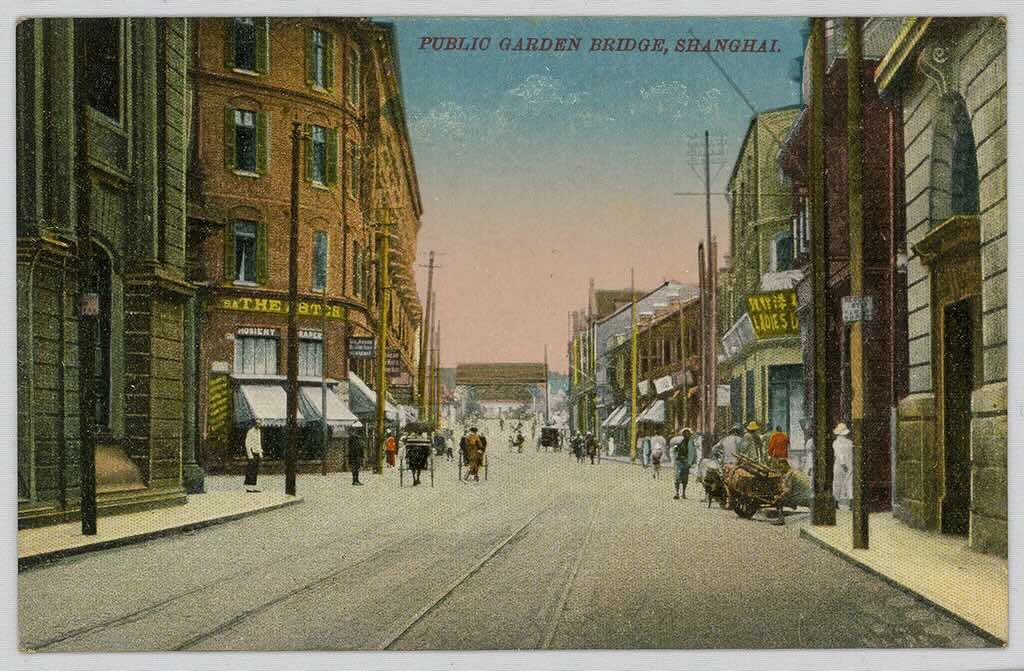
From our previous blog post we have taken a few steps down past the Japanese Post Office - the building can still be seen on the very right in this postcard from the late 1910s. On the very left is the building of the Hongkong and Shanghai Bank that we visited before, followed by the intersection with Broadway and the north-west corner of the Astor House Hotel.
This is the only photo that I've found where this corner of the Astor House is clearly visible. There is actually a sign THE ASTOR over the corner store. The store advertises Hosiery and Drapes over its windows, and we know that some 20 years later it is still there.
The other store signs on the left of this first block of Broadway are unfortunately unreadable. In the distance we see the still relatively new Garden Bridge - in this card somewhat uniquely named as Public Garden Bridge.
This is an early photo and the traffic is all pedestrians and hand drawn carts and rickshaws. This bucolic scene will not last much longer as Shanghai is modernizing at a fast pace.
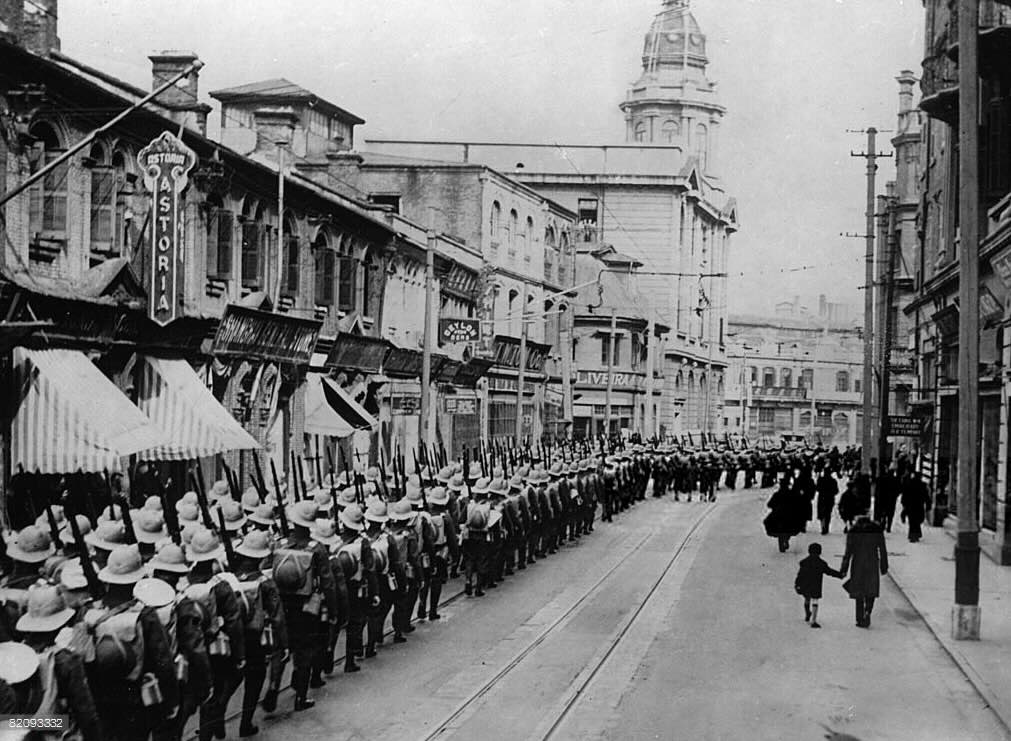
We've been walking half a block towards Garden Bridge, and we turned around and let 20 year pass by. It's the 15th of February 1938, and a battalion of British troops is marching along Broadway to the wharves a few blocks further east. They are deploying to Hong Kong on this day.
But there is more to see here - beyond the marching columns of soldiers we get a good view of the building next to the tall Japanese Post Office building. The store sign is partially readable "...LIVEIRA &...". This is the headquarters of H. Oliveira & Son, a company trading in machinery, tools, and engineering supplies since 1911. The office was located here at No. 1 Seward Road from 1936 until 1941 and the company moved to Hong Kong in the late 1940s.
To the left of this building we have a few stores that are hard to identify. One seems to be CEYLON GEMS - a jewelry store still listed in a 1949 business directory. It is among several other small businesses with unreadable signage.
But then closer to our left, we see a large storefront with a prominent sign - the Astoria Confectionary & Tea Room at No.33 Broadway.
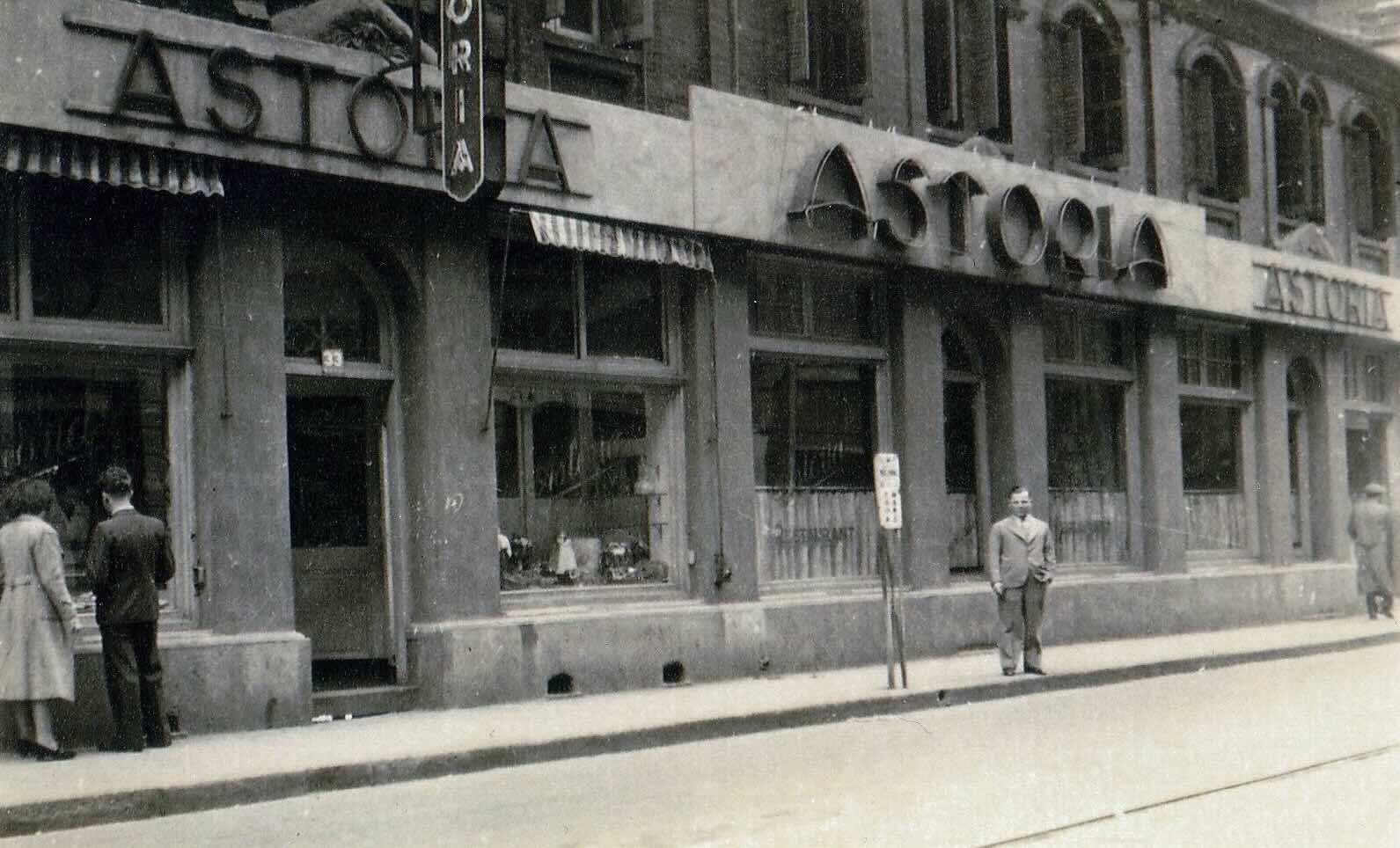
Founded by Kyriaco Dimitriades in the early 1920, one can only assume that the name "Astoria" across the street from the Astor was no coincidence. The cafe seems to have expanded rapidly, as the address along Broadway seems to encompass ever more of the small neighborhood stores with the passing years. This photo is from 1937, with the cafe having taken on its final form in this location. I wonder who is that man in the center of the photo that seems to stare straight at us.
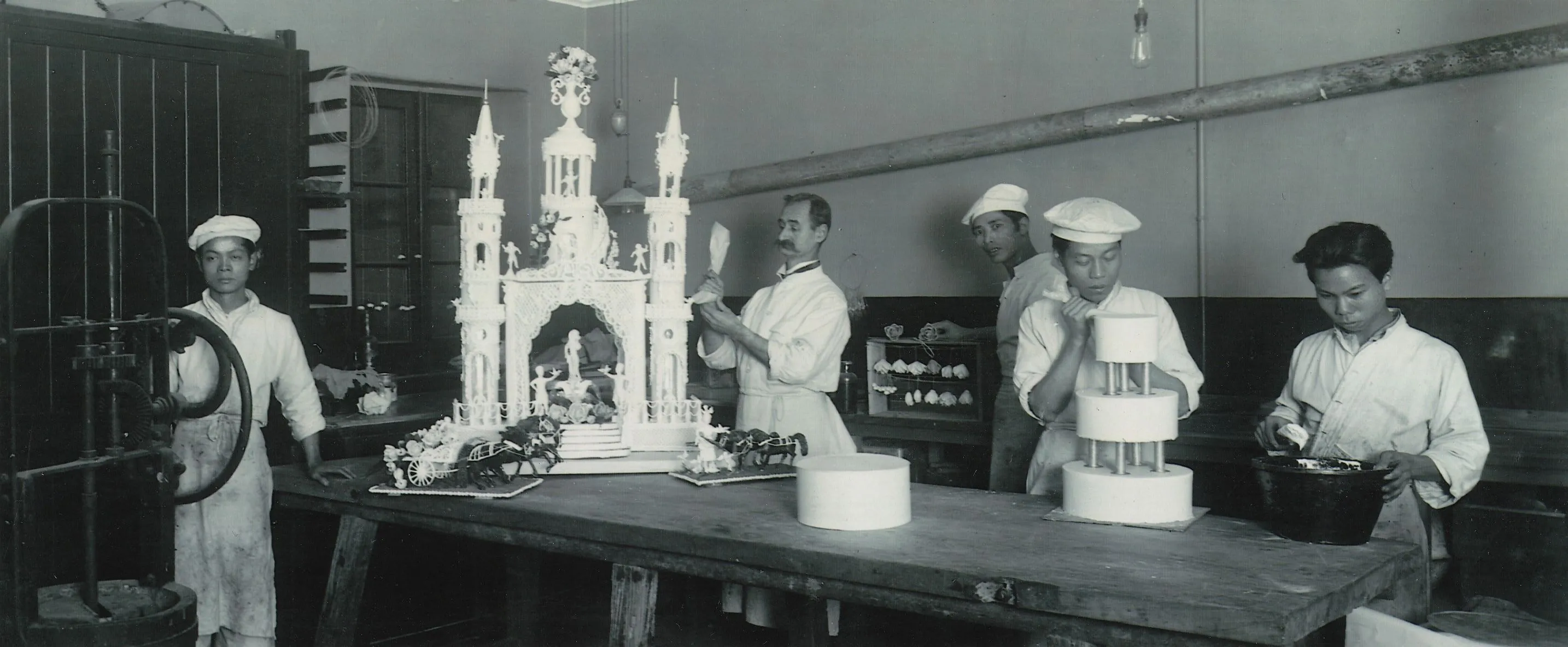
The pastry chefs of the Astoria provided elaborate cakes for weddings and birthdays, which were probably quite often ordered for celebrations across the street at the Astor House. Just look at that amazing cake under construction!
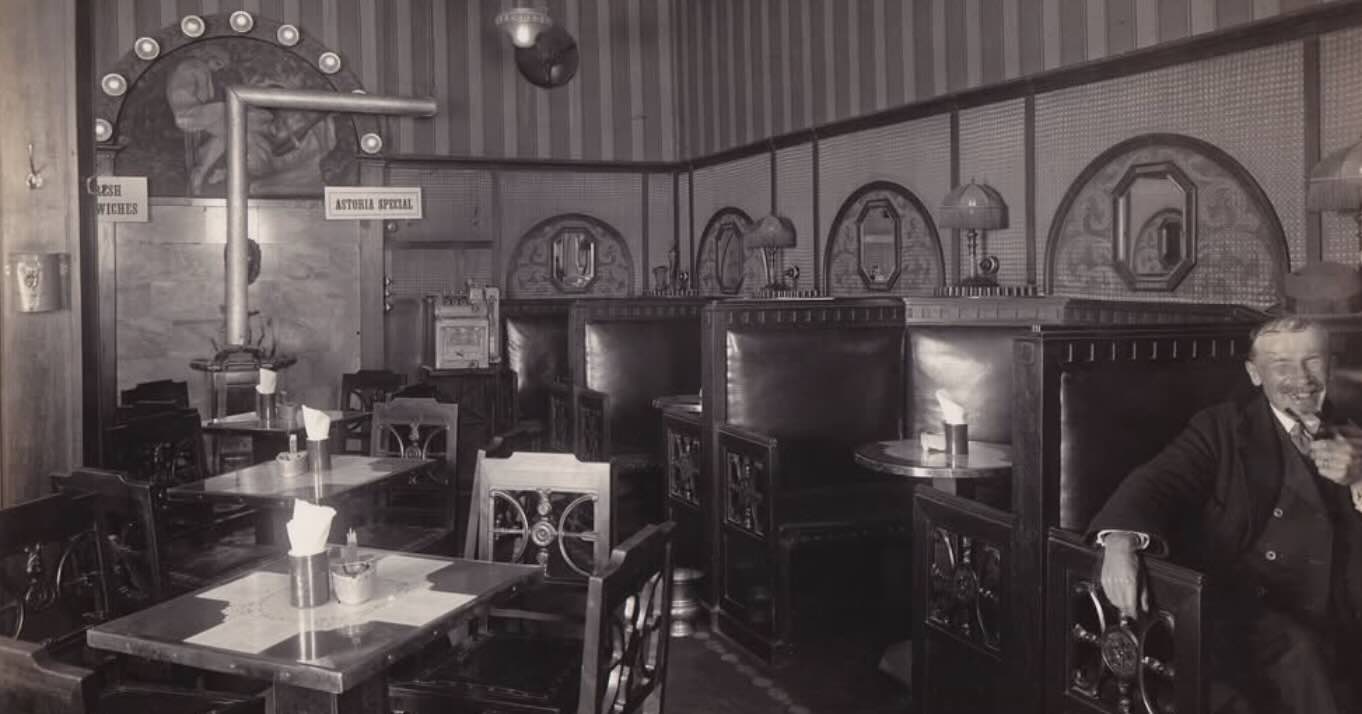
The dining room of the Astoria provided an Old Europe atmosphere and one can only imagine the many fascinating meetings that must have taken place amidst the heavy furniture, with waiters in formal uniforms bringing out coffee and sweets for the patrons to enjoy.
The older gentleman at the very right in this photo sure seems to have a good time here.
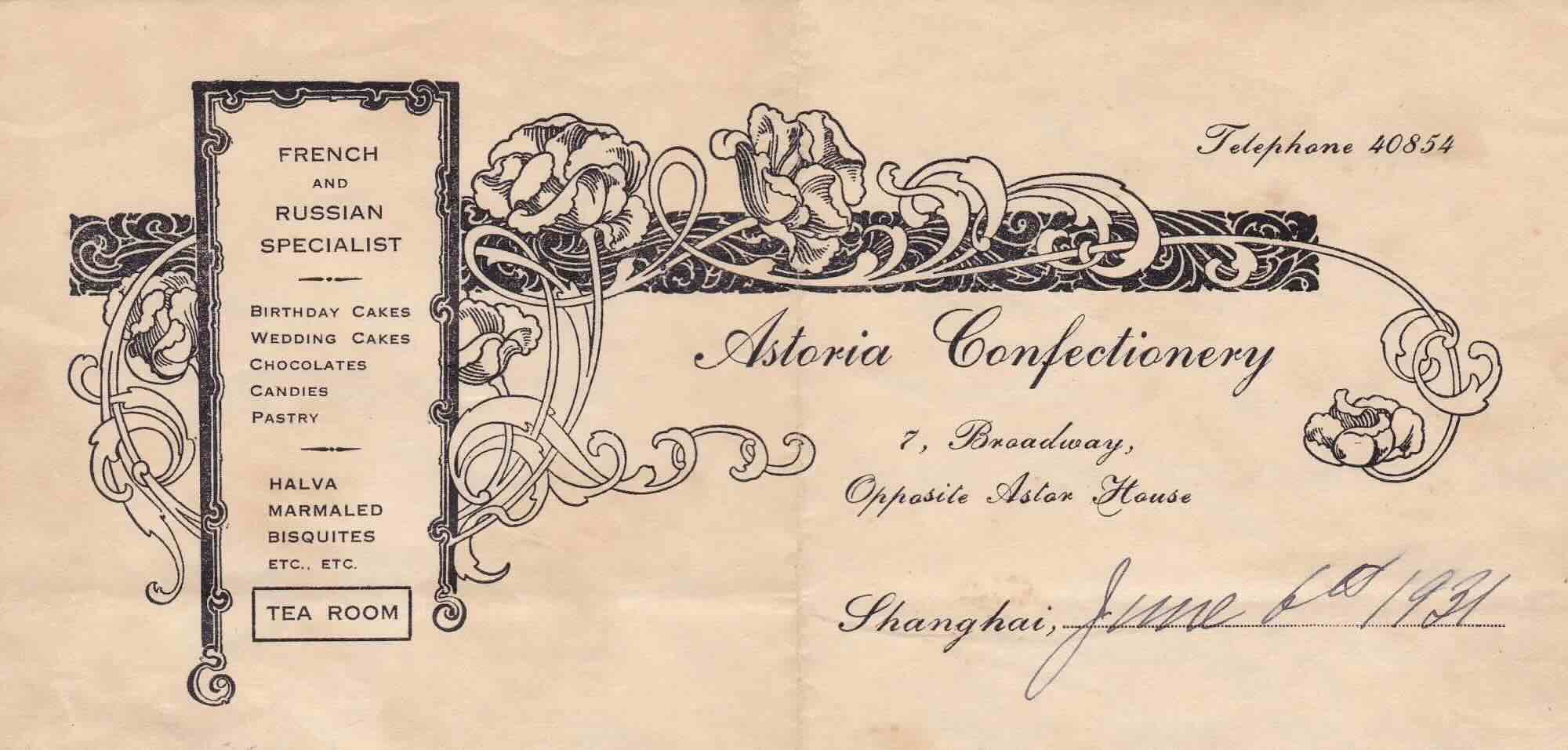
The Astoria lasted here until 1949, when the business relocated to Taipei. Amazingly enough, the Astoria Confectionary & Café can still be found in Taipei today.

Going back out onto Broadway, let's have one more look at this building, just a few months after the Astoria Confectionary & Tea Room had closed its doors for the last time in 1949. This is the neighbor to the Astoria's left, the Bridge-Head Cafe and Bar.
This end of the row of buildings just narrowly avoided destruction in 1930, as the building to its left - the corner with the many-named Mactavish drug store was razed to make space for the Broadway Mansions. We see the back of the giant Broadway Mansions to the left in this shot, but we'll visit there at length in a future post.
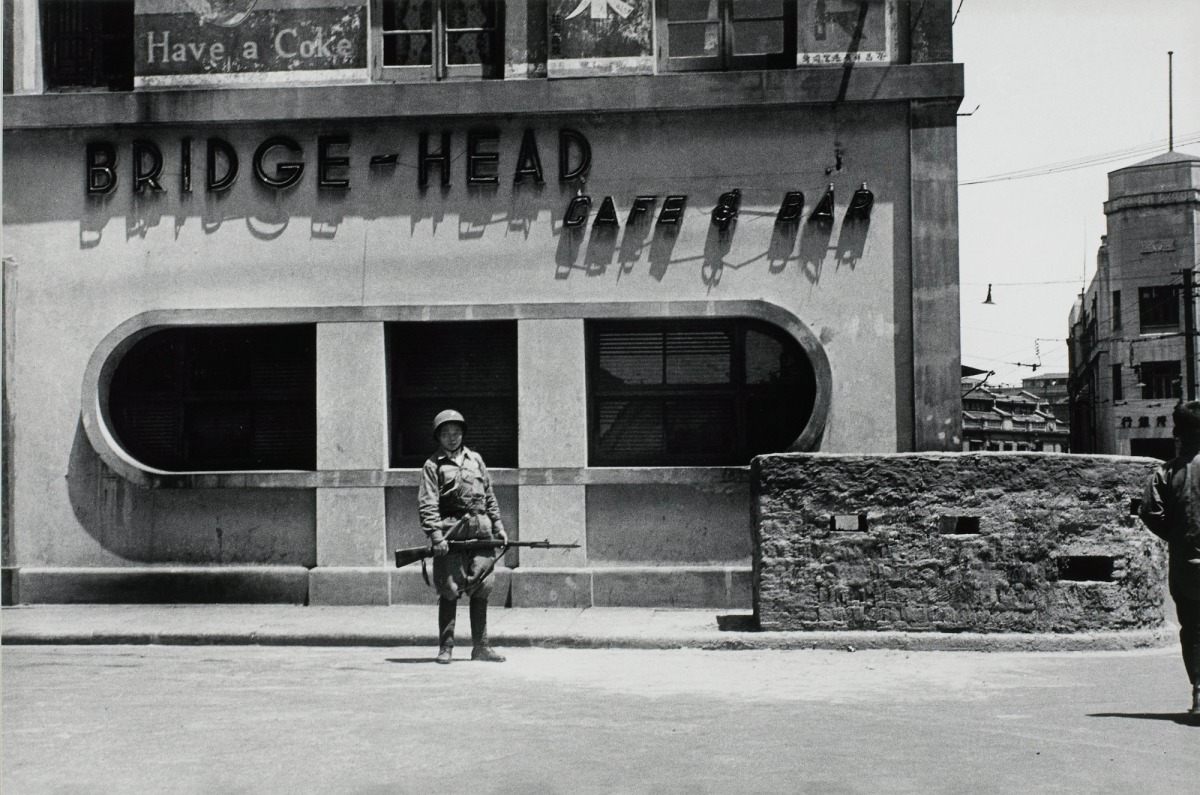
Walking around the corner of the bar, so the Broadway Mansions would be looming behind us, here is another shot of the Bridge-Head Cafe and Bar, this time from the south. In the distance to the right we see the Hongkong and Shanghai Bank building, where we started this blog post 30 years earlier and one block away.
There is a lone KMT (Nationalist) soldier guarding the area, and he rightfully looks wary - this photo is from May 1949, only days before the final battle for Shanghai between the retreating Nationalist army and the Communist forces. Over 150,000 Nationalist troops were killed in this decisive battle for Shanghai's - and China's - future.
It's time to walk a little further south and take another look at the Garden Bridge and the very end of Broadway in our next post.